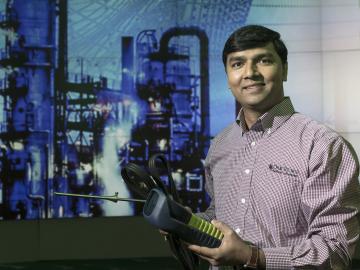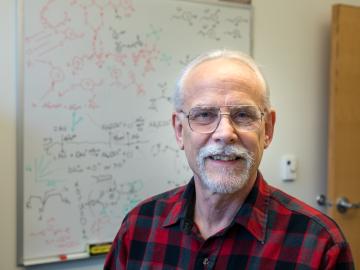
Filter News
Area of Research
- Advanced Manufacturing (4)
- Biological Systems (1)
- Biology and Environment (3)
- Building Technologies (1)
- Clean Energy (44)
- Climate and Environmental Systems (2)
- Computational Engineering (1)
- Computer Science (7)
- Fusion Energy (4)
- Materials (27)
- National Security (3)
- Neutron Science (16)
- Nuclear Science and Technology (9)
- Quantum information Science (2)
- Supercomputing (18)
- Transportation Systems (1)
News Type
Date
News Topics
- 3-D Printing/Advanced Manufacturing (11)
- Advanced Reactors (6)
- Artificial Intelligence (9)
- Big Data (7)
- Bioenergy (4)
- Biomedical (3)
- Biotechnology (1)
- Clean Water (4)
- Composites (1)
- Computer Science (26)
- Cybersecurity (1)
- Energy Storage (7)
- Environment (14)
- Exascale Computing (1)
- Fusion (3)
- Grid (4)
- Machine Learning (4)
- Materials Science (10)
- Mercury (1)
- Microscopy (2)
- Molten Salt (1)
- Nanotechnology (3)
- Neutron Science (12)
- Nuclear Energy (14)
- Physics (3)
- Polymers (1)
- Quantum Science (5)
- Space Exploration (4)
- Summit (6)
- Sustainable Energy (3)
- Transportation (10)
Media Contacts

In a step toward advancing small modular nuclear reactor designs, scientists at Oak Ridge National Laboratory have run reactor simulations on ORNL supercomputer Summit with greater-than-expected computational efficiency.

Sachin Nimbalkar may have grown up in a small town in the shadows of India’s Sahyadri Mountains dreaming of outer space, but it’s the science of conserving energy in inner space where the engineer has made his mark.

When Scott Smith looks at a machine tool, he thinks not about what the powerful equipment used to shape metal can do – he’s imagining what it could do with the right added parts and strategies. As ORNL’s leader for a newly formed group, Machining and Machine Tool Research, Smith will have the opportunity to do just that.

Ionic conduction involves the movement of ions from one location to another inside a material. The ions travel through point defects, which are irregularities in the otherwise consistent arrangement of atoms known as the crystal lattice. This sometimes sluggish process can limit the performance and efficiency of fuel cells, batteries, and other energy storage technologies.

Bruce Moyer’s career as a trailblazing chemist began with a Gilbert chemistry set, the perfect Christmas gift for an inquisitive kid growing up in 1960s Pennsylvania. Moyer squirreled away the test tubes and racks of chemicals in his bedroom to conduct unsupervised experiments on solubility, corrosion, and other subjects included in Gilbert’s captivating manual.

Oak Ridge National Laboratory is using artificial intelligence to analyze data from published medical studies associated with bullying to reveal the potential of broader impacts, such as mental illness or disease.

Scientists at Oak Ridge National Laboratory have developed a low-cost, printed, flexible sensor that can wrap around power cables to precisely monitor electrical loads from household appliances to support grid operations.

Oak Ridge National Laboratory scientists are evaluating paths for licensing remotely operated microreactors, which could provide clean energy sources to hard-to-reach communities, such as isolated areas in Alaska.

A team of scientists led by Oak Ridge National Laboratory used carbon nanotubes to improve a desalination process that attracts and removes ionic compounds such as salt from water using charged electrodes.

Scientists at the Department of Energy’s Oak Ridge National Laboratory are working to understand both the complex nature of uranium and the various oxide forms it can take during processing steps that might occur throughout the nuclear fuel cycle.


